10 Plants That You Might Mistake for Marijuana
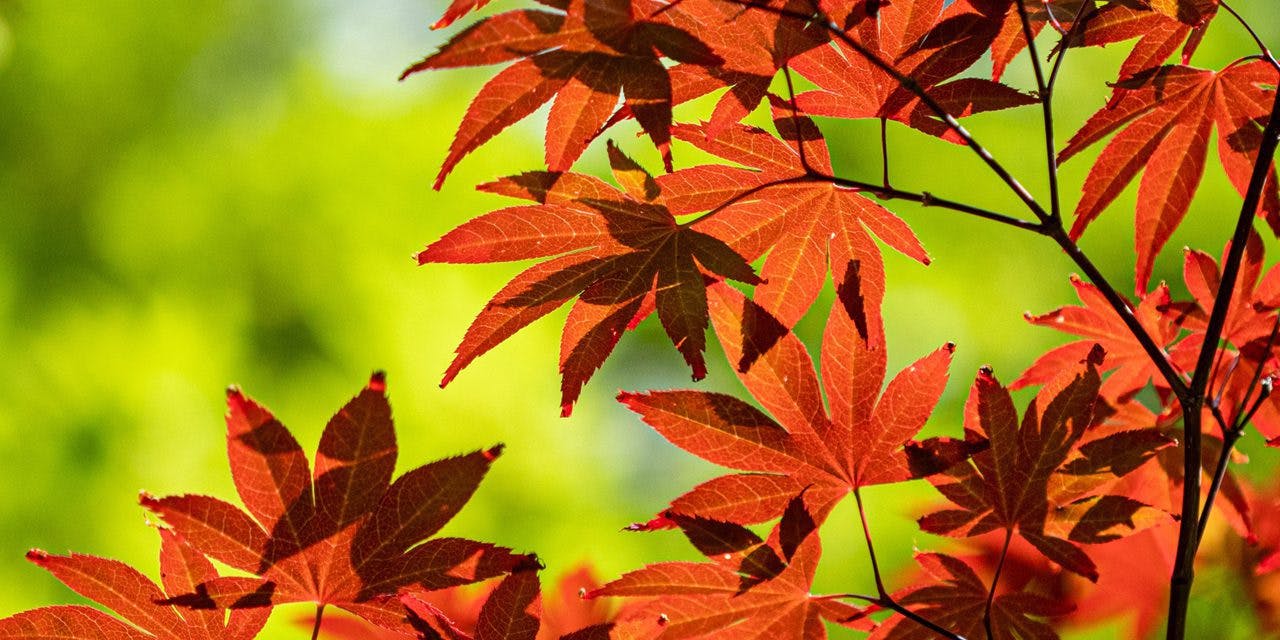
Article written by
Emma Stone
Content reviewed by

Dr. Lewis JasseyMedical Director - Pediatric Medicine
A diverse range of plants can look like marijuana during various growth cycles. It’s not hard to confuse Cannabis sativa with common flowering shrubs, trees, or even crops such as cassava. However, knowing how to differentiate marijuana from similar-looking specimens can be straightforward if you know what to look for.
Get your medical marijuana card
Connect with a licensed physician online in minutes.
What Does Marijuana Look Like?
Cannabis sativa plants have long, slender stems with large palm-shaped leaves that are attached to the stem at nodes. These fan-like leaves have a serrated edge that is often likened to a maple leaf.
The cannabis leaf is also a compound, divided into mini leaflets that join together at the petiole or leaf stalk. Leaves are darker green at the top, lighter on the underside, and covered in light hairs on both sides.
Beyond the leaves, cannabis can also be identified by the bud structure of female plants. Cannabis sativa produces chunky buds that are protected by tiny leaves known as sugar leaves. When these buds tend toward maturity, the long, hair-like pistils in the center of the bud begin turning deep burnt orange (usually during the seventh and eighth weeks of flowering).
Mature buds look as if they’ve been dipped in translucent crystals due to the resinous glandular trichomes that form on them. Clusters of cannabis buds often grow tightly together in formations known as colas.
10 Plants That Look Like Marijuana
Diverse species of plants can be mistaken for cannabis. Sometimes, it is just the leaves that are similar, and other times the plants belong to the Cannabacae family of plants, which includes hops, hackberry, and trema. Knowing some of the most common plants that are easily confused with the marijuana plant can be particularly helpful if you’re thinking of growing any of these species.
Similarly, differentiating a marijuana seedling from, for example, a Southern Marigold can ensure you don’t get ripped off when buying cannabis plants.
Here are the top ten plants that look like marijuana.
1. Japanese Maple (Acer palmatum)
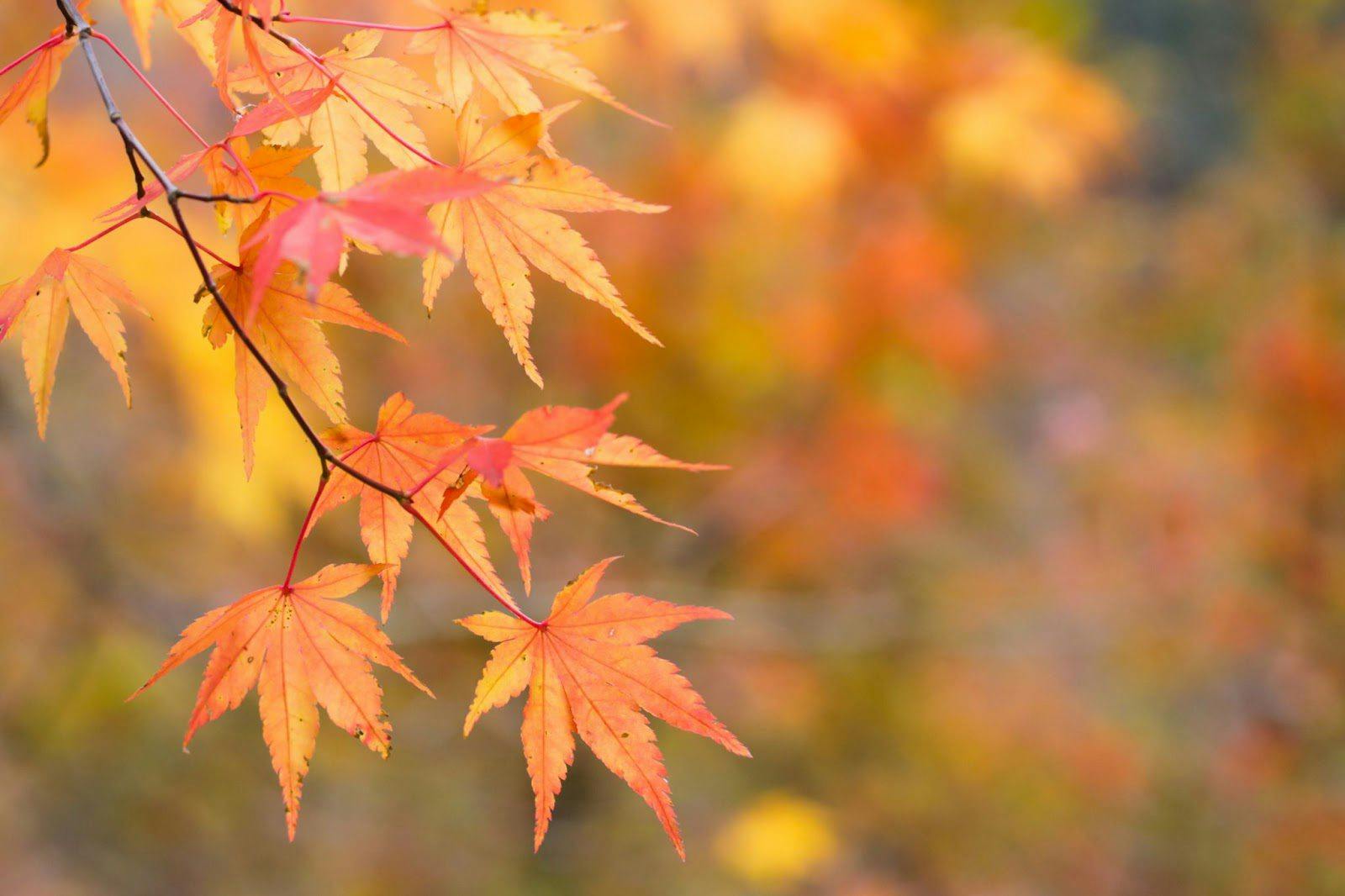
The Japanese maple is a famous ornamental tree from Asia. Japanese maples are commonly mistaken for the marijuana plant, particularly when they are very young saplings. At this early growth stage, the tree’s stem is still very slender and bendy with bright green leaves that look like the compound palmate leaf of Cannabis sativa. Like cannabis leaves, Japanese maple leaves also have a toothed or serrated margin.
However, the similarities between the Japanese maple and cannabis plant end here. In late spring and summer, Acer palmatum leaves usually turn red, pink, and purple hues. After the first growing season, the stem becomes woody as it thickens into a tree trunk. Finally, the Japanese maple leaves are hairless (glabrous), unlike cannabis leaves, which are covered with fine hairs.
2. Southern Marigold (Tagetes minuta)
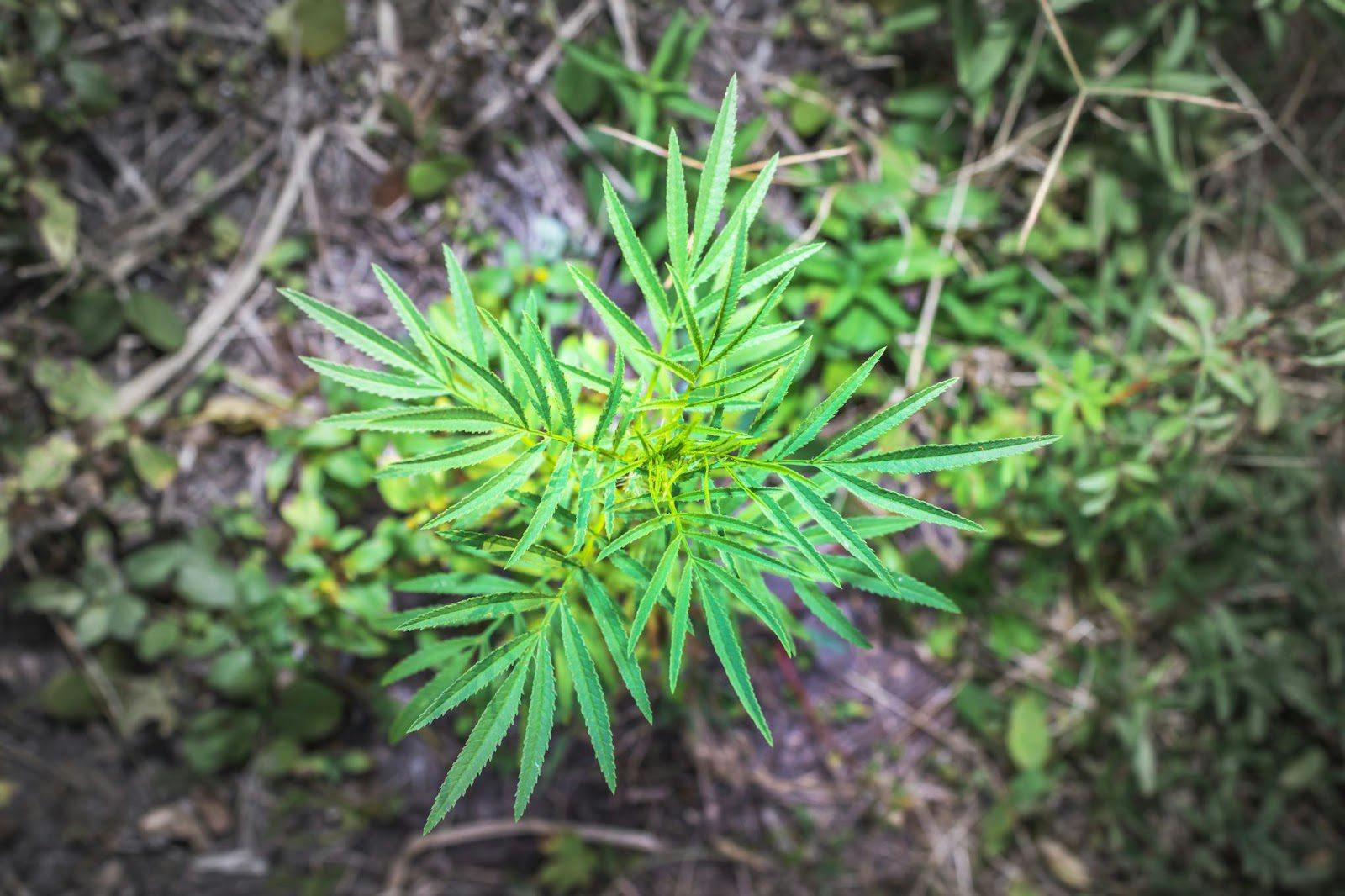
The Southern marigold, also known as Muster-John-Henry, is a native of Central America and is used for culinary and medicinal purposes. However, the shrub spreads easily and is often considered a weed as it grows quickly on land that has been cultivated or disturbed. It can grow near crops, vegetables, pastures, orchards, and abandoned lots.
As a seedling, the marigold looks remarkably similar to the marijuana plant. Tagetes minuta boasts long, elongated leaves and finely serrated at the edges. Both plants can also grow to a similar size.
Despite their similarities, there are several easy ways to differentiate marigolds from marijuana. Marigolds produce small yellow flowers, while weed produces green and purple buds. Secondly, marigold leaves are not a compound structure composed of leaflets; each leaf is attached separately to the stem.
3. Sunn Hemp (Crotalaria juncea)
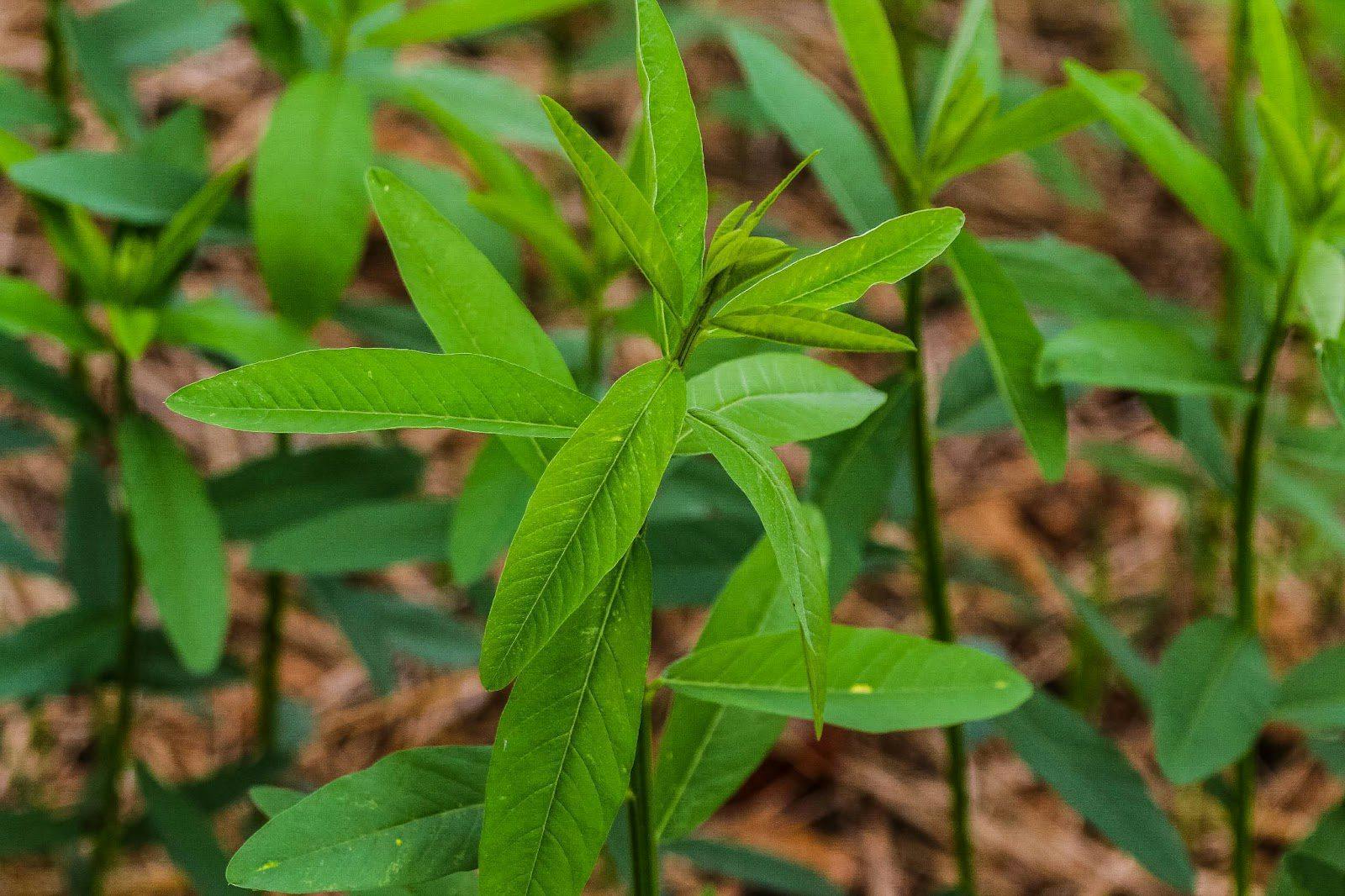
Sunn hemp and Cannabis sativa are frequently confused as both share a similar appearance. The sunn hemp plant is a native of India and found worldwide in tropical and subtropical regions. Nowadays, sunn hemp is often used as a green manure crop.
Industrial hemp and sunn hemp plants share some notable similarities, such as elongated, thin, green leaves with serrated edges. Like Cannabis sativa, sunn hemp can grow up to two meters or more and has a slender stalk.
Fortunately, it’s easy to tell the two plants apart. Sunn hemp has bright yellow flowers, whereas cannabis has green or purple-tinged buds. When you look closely at the leaves of sunn hemp, they’re distinctive from those of cannabis as they are singular (not compound) and elliptical in shape.
4. Coral Plant (Jatropha multifida)
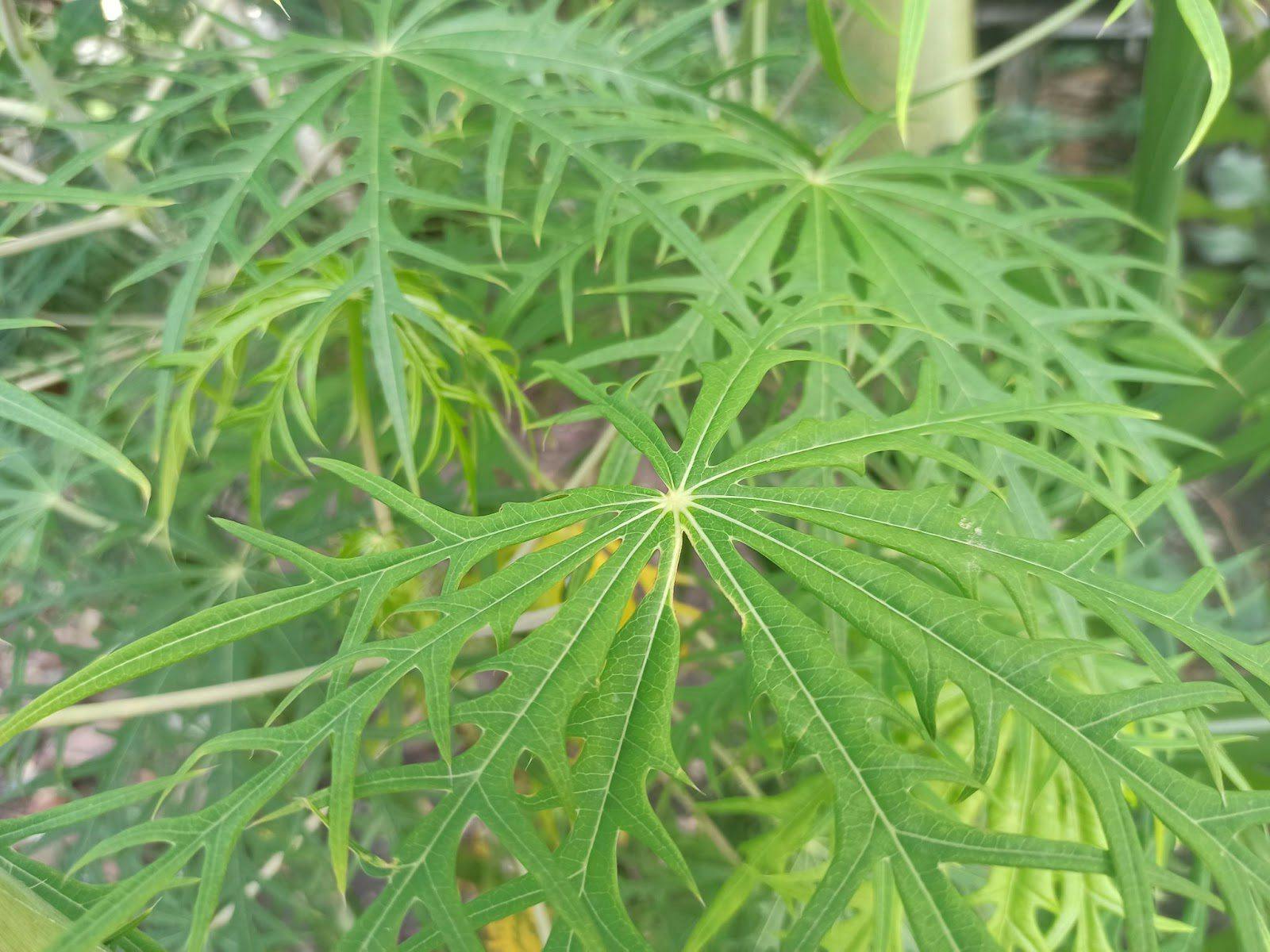
The coral plant, or coralbush, a native of Mexico and the Caribbean, bears an uncanny resemblance to cannabis. Like marijuana, the palm-shaped leaves of the coral plant are comprised of leaflets that grow from a single point. The leaves comprise seven to eleven lobes, which can be confused with cannabis (which has up to eleven leaflets).
However, a closer look at the coralbush leaves will reveal some distinctive differences to weed. The plant leaves are lobed, not divided into separate leaflets, like the cannabis plant. The coral plant releases clusters of bright pink flowers, unlike Cannabis sativa, which produces buds in more muted green and purple-toned shades.
The coralbush is also easily distinguished by its unpleasant scent, which has been described as akin to cat urine. Finally, the plant exudes a viscous white substance when damaged, while cannabis does not.
5. Okra (Abelmoschus esculentus)
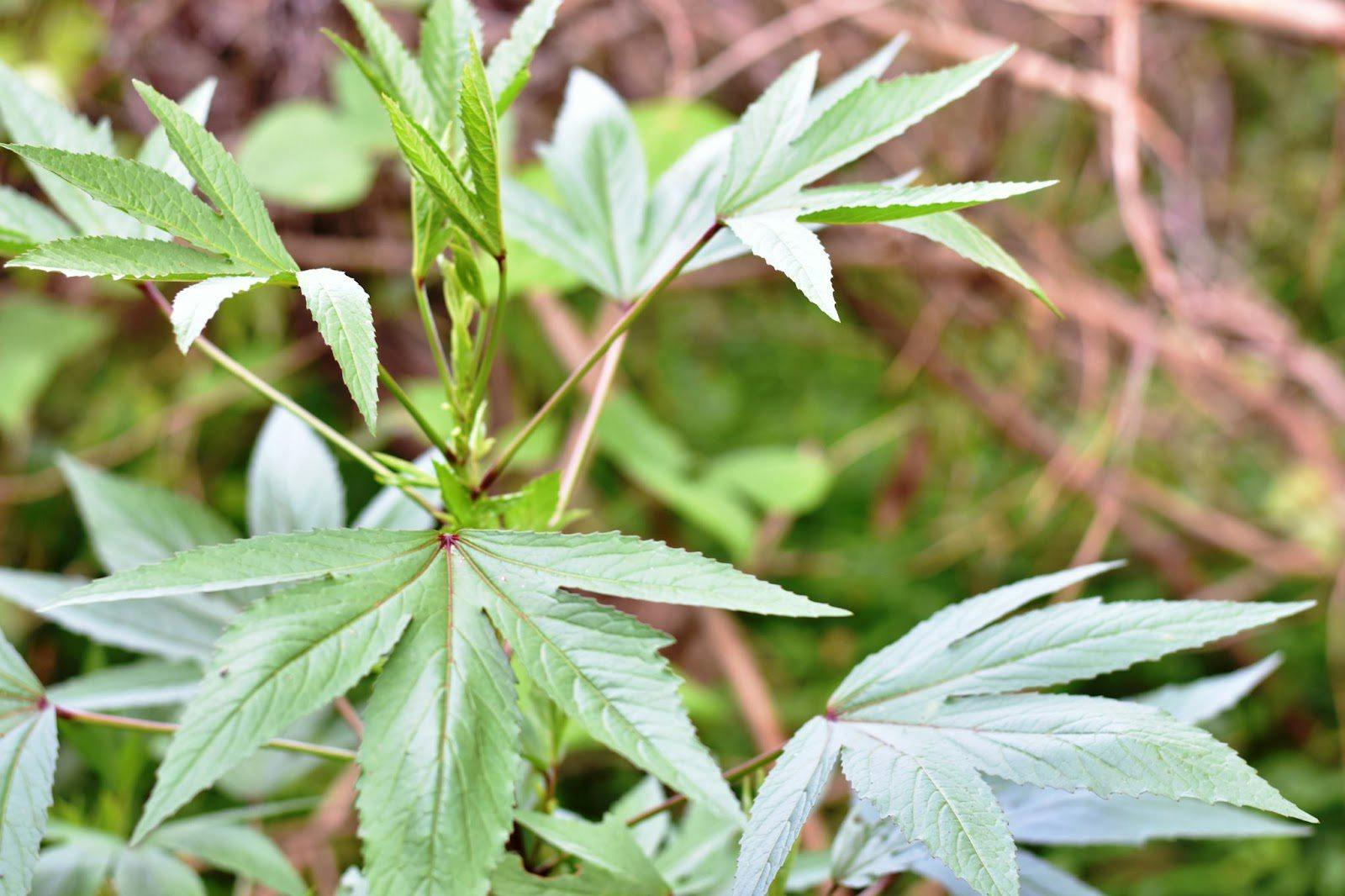
Okra is prized worldwide for its edible green seed pods and longstanding use in traditional medicine. A native of tropical Asia and Africa, okra is now commonly found in tropical and subtropical gardens all over the globe.
Okra can also be confused with Cannabis sativa, primarily because of the similarities between the leaves of the two plants. Both can look similar from a distance. Okra and cannabis share broad green, palmate-style leaves and can grow fairly tall.
These similarities have led to some newsworthy misunderstandings: During a helicopter flyover, the Georgia State Patrol caught a glimpse of an okra plot and dispatched officers to undertake a raid. Upon realizing the crop was okra and not cannabis, the State Patrol Captain had to apologize. Had the task force looked more closely at the crop in question, they would have realized they had a gumbo ingredient on their hands rather than a banned substance.
Okra has large white or yellow flowers, while weed plants have small green or purple buds and flowers. Cannabis plants have up to eleven leaflets, while an okra plant has a maximum of seven lobes. Okra is also distinguishable by the large green pods that grow on mature plants.
6. Cassava (Manihot esculenta)
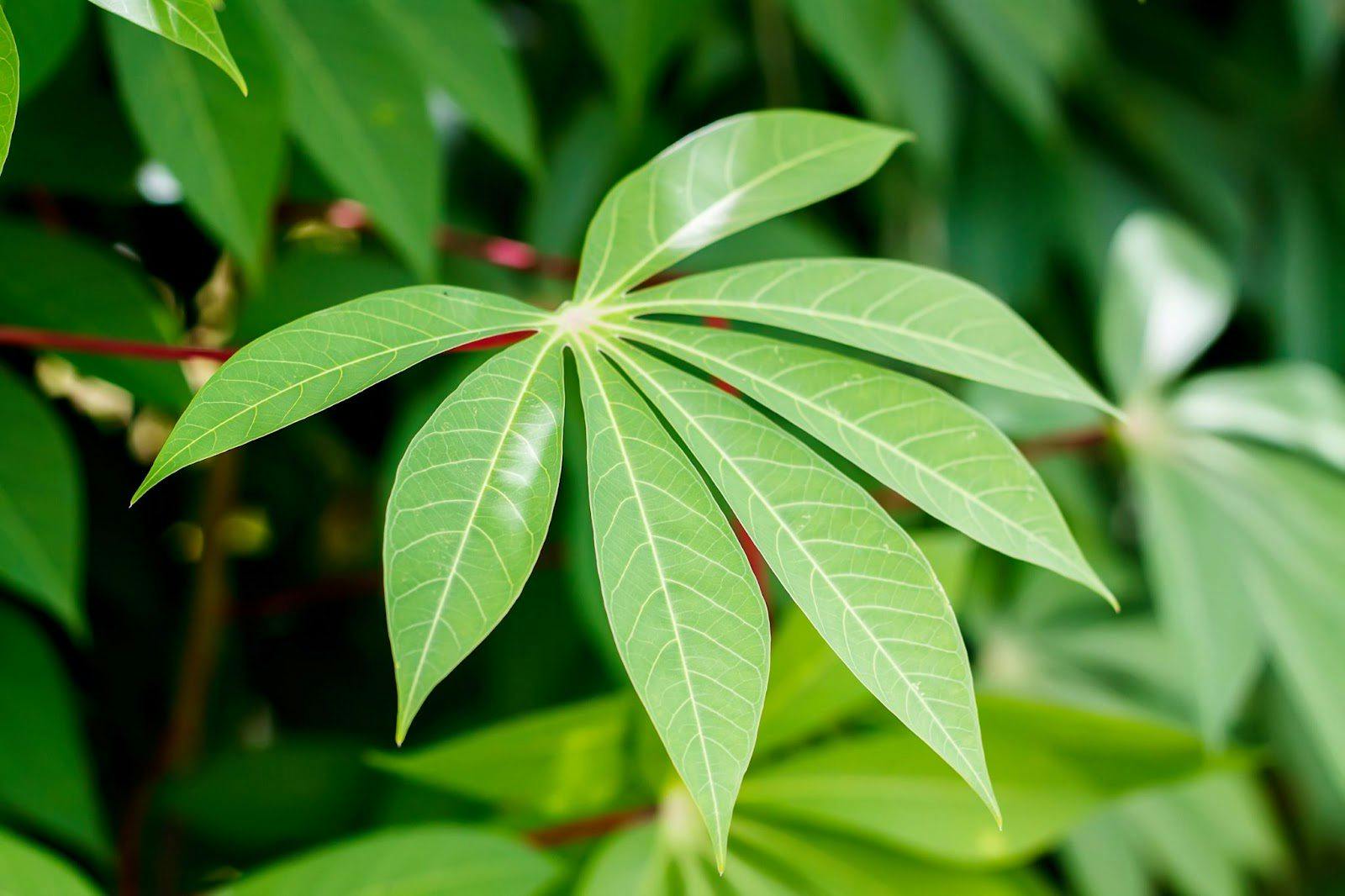
Cassava, also known as yuca or manioc, is a woody shrub from South America. The starchy roots of the plant provide an excellent source of carbohydrates and are used in countries such as Brazil to make flour, bread, and other items.
Manihot esculenta looks like cannabis as both have large leaves with an unmistakable palmate shape. However, the marijuana leaf is divided into separate leaflets, while the leaves of M. esculenta are lobed but not divided. Moreover, cassava leaves have smooth edges, unlike the jagged, serrated-looking edge of marijuana leaves.
Like okra, cassava plants also exude a viscous, white latex when damaged, while cannabis does not. Both cannabis and cassava lack flowers with petals; however, the sepals of the cassava plant are colorful and conspicuous, while the sepals of the cannabis plant are green-white and less noticeable.
7. Spider Flower (Cleome hassleriana)
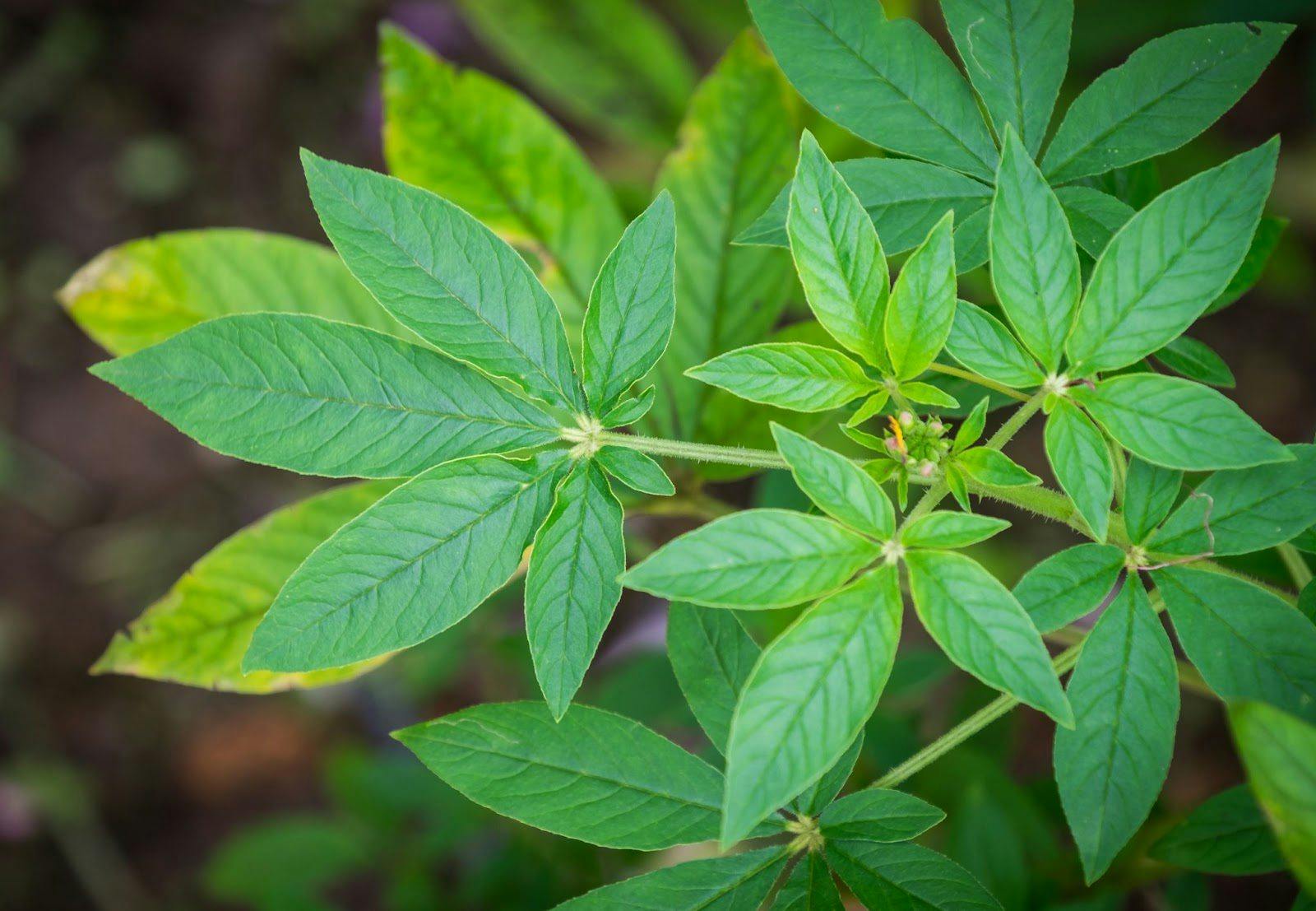
Cleome is an edible plant that grows wild throughout North America. This weed of sorts is celebrated for its ability to attract beneficial insects. The plant has also been used medicinally by First Nations peoples as a poultice for wounds.
When fully mature and blossoming, the spider flower bears little resemblance to cannabis with its masses of soft pink flowers. However, when the plant is still growing, it has a remarkably similar appearance to weed due to its long, spiky leaves. Both species have palmately compound leaves with leaflets attached separately at the base. The two plants also share toothed or serrated leaf margins, with the surface of the leaves dotted with hairs.
There are several ways, however, to differentiate cleome from cannabis. The toothed edge of the cleome leaf is much less obvious than that of the marijuana leaf. The surface of cleome leaflets and their petioles are clothed with glandular hairs that produce a rank, musky, or skunky odor when crushed. The cannabis leaf, however, has a far more subtle scent (unlike marijuana buds, which smell very skunky). Lastly, cleome produces some prickles, while cannabis produces none.
8. Texas Star Hibiscus (Hibiscus coccineus)
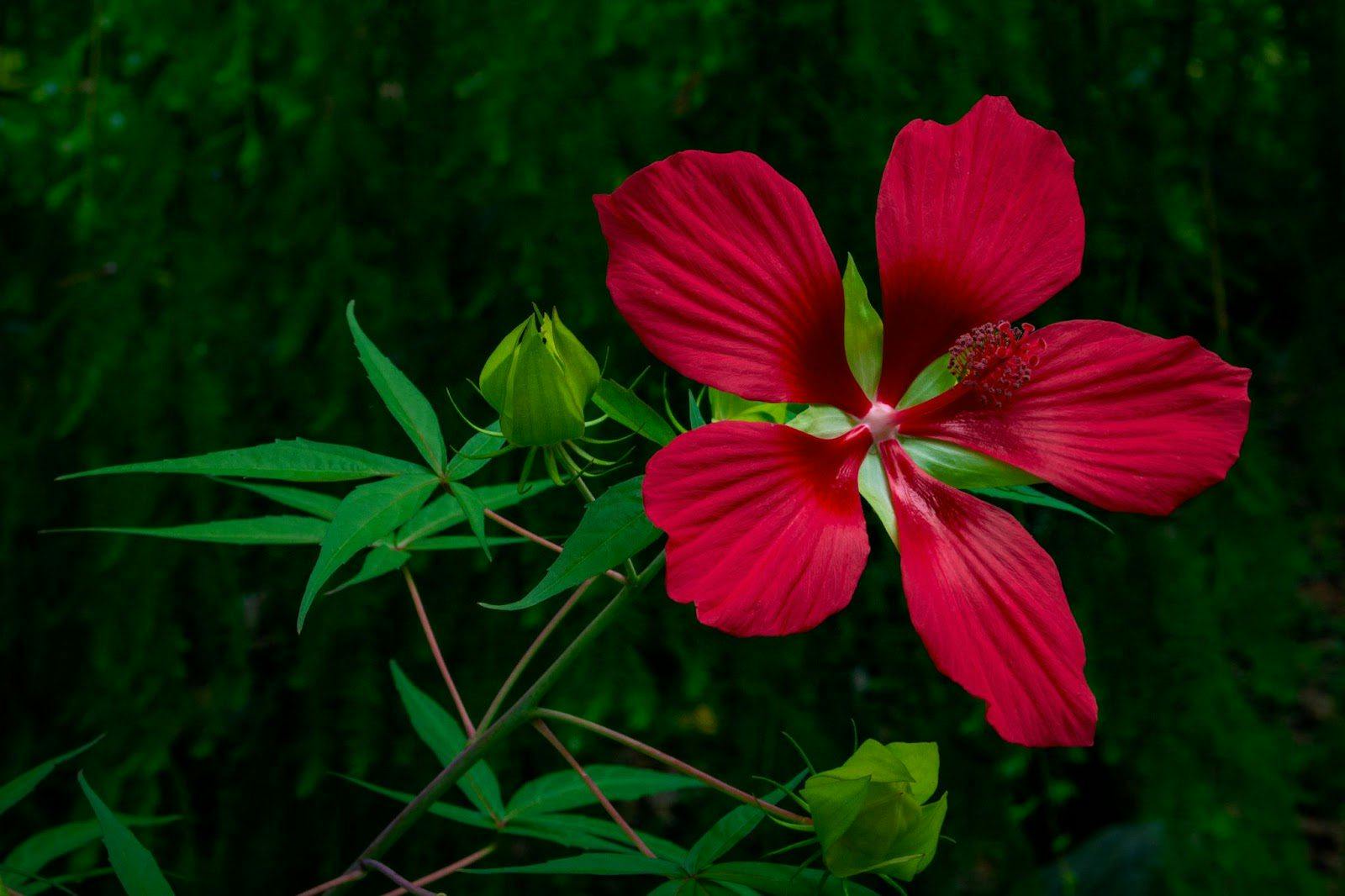
The Texas Star hibiscus, also known as the scarlet rosemallow, is a native of the Americas and a popular ornamental plant. During its growing phase (before it blossoms), the Texas Star looks deceptively like weed. Both have long slender stems and textured leaves with serrated edges, which to the untrained eye, can create the illusion of a cannabis plant to the untrained eye.
However, several critical distinctions separate these two plants. The Hibiscus coccineus has a woody stem, whereas cannabis stems are green and soft. The leaves of the Texas Star hibiscus also tend to be droopier than the cannabis leaf. Finally, come summer, the Texas Star gives flashy displays of crimson or white flowers.
9. Kenaf (Hibiscus cannabinus)

Kenaf resembles cannabis so much that its botanical name even references it. Kenaf plants are native to Southern Asia and Africa, and cultivated primarily for fiber. Kenaf looks almost identical to weed during its early stages of growth. Both plants produce palmate-style leaves with serrated edges.
It’s easier to tell these plants apart when they are more mature. The Hibiscus cannabinus produces yellow or scarlet flowers complete with sepals, petals, stamens, and carpels, while cannabis produces subtler, more muted buds. Cannabis leaves are divided into separate leaflets, while kenaf leaves are lobed. Leaves that are lower on the kenaf plant are heart-shaped, while leaves higher on the plant have a palm/star-like appearance. Marijuana leaves are consistently shaped regardless of their position on the plant
10. Chaste Tree (Vitex agnus-castus)
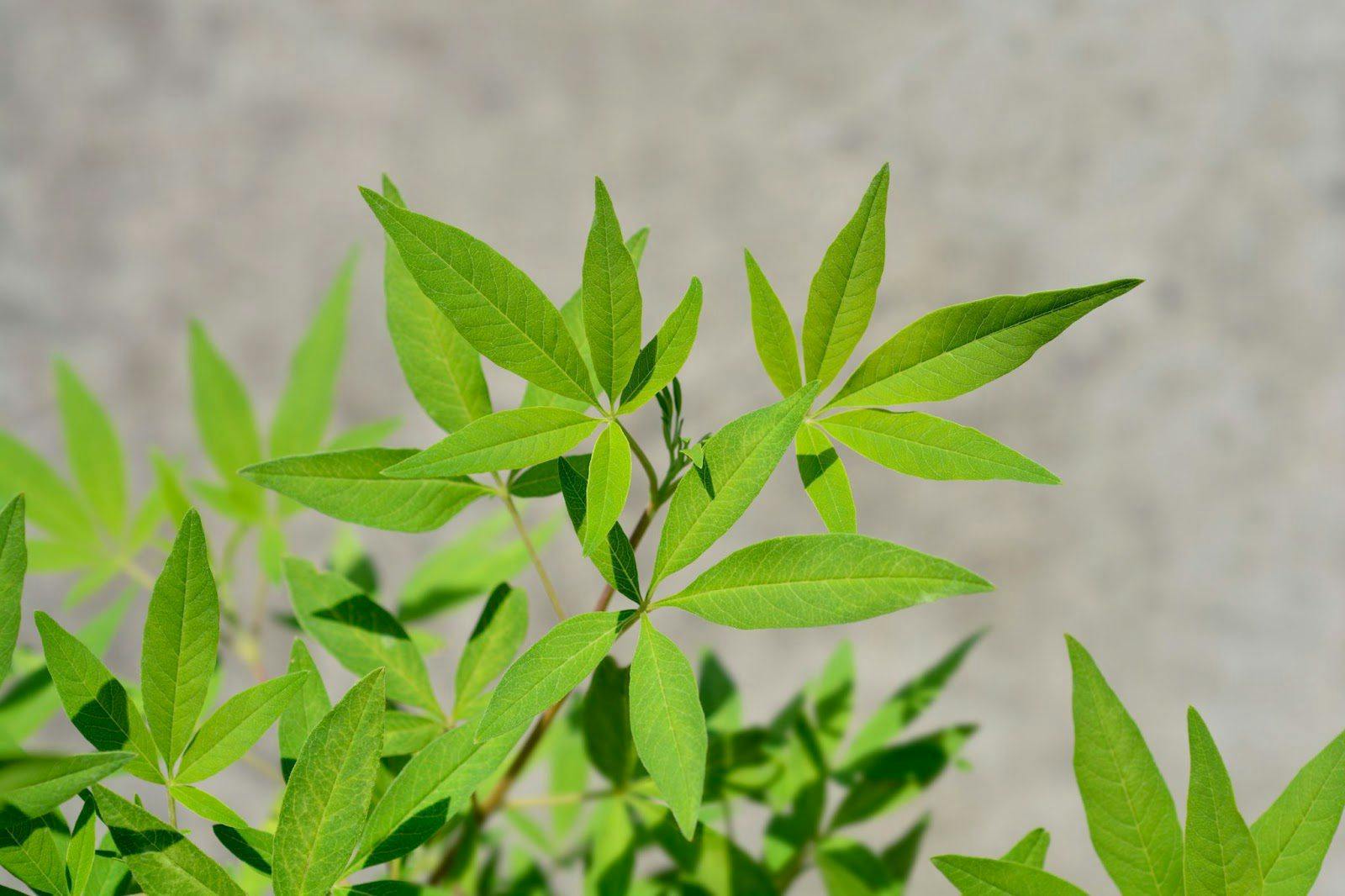
The Chaste tree is a member of the Verbenaceae family, which includes plants such as lemon verbena. This flowering plant, also known as monk’s pepper, thrives in rocky Mediterranean climates. Legend has it that monks used to give it to over-amorous people as an anaphrodisiac to quell the libido, thus the origin of the plant’s name.
The Chaste tree is often confused with cannabis because the leaves of the young plant look remarkably like marijuana leaves. Chaste trees grow leaves consisting of five leaflets in a palmate arrangement.
However, the trained eye can easily distinguish between these two species. The Chaste tree leaves are smooth, unlike the serrated toothed margins of the cannabis plant. Chaste tree leaves curl under slightly at the ends. The Chaste tree also produces large protrusions of light purple flowers and berries, in contrast to the subtler, less showy buds of the marijuana plant.
The Bottom Line
In general, most people confuse the plants above with cannabis due to similarities in leaf shape. Palmate, multi-lobed leaves with serrated edges can be easily mistaken for marijuana leaves, particularly if the plant is in its early growth phase and has no flowers.
However, a closer look at the leaves, or the emergence of blossoms, can clearly distinguish any of the plants listed above from cannabis.
Get Your Medical Card
Connect with a licensed physician online in minutes.
